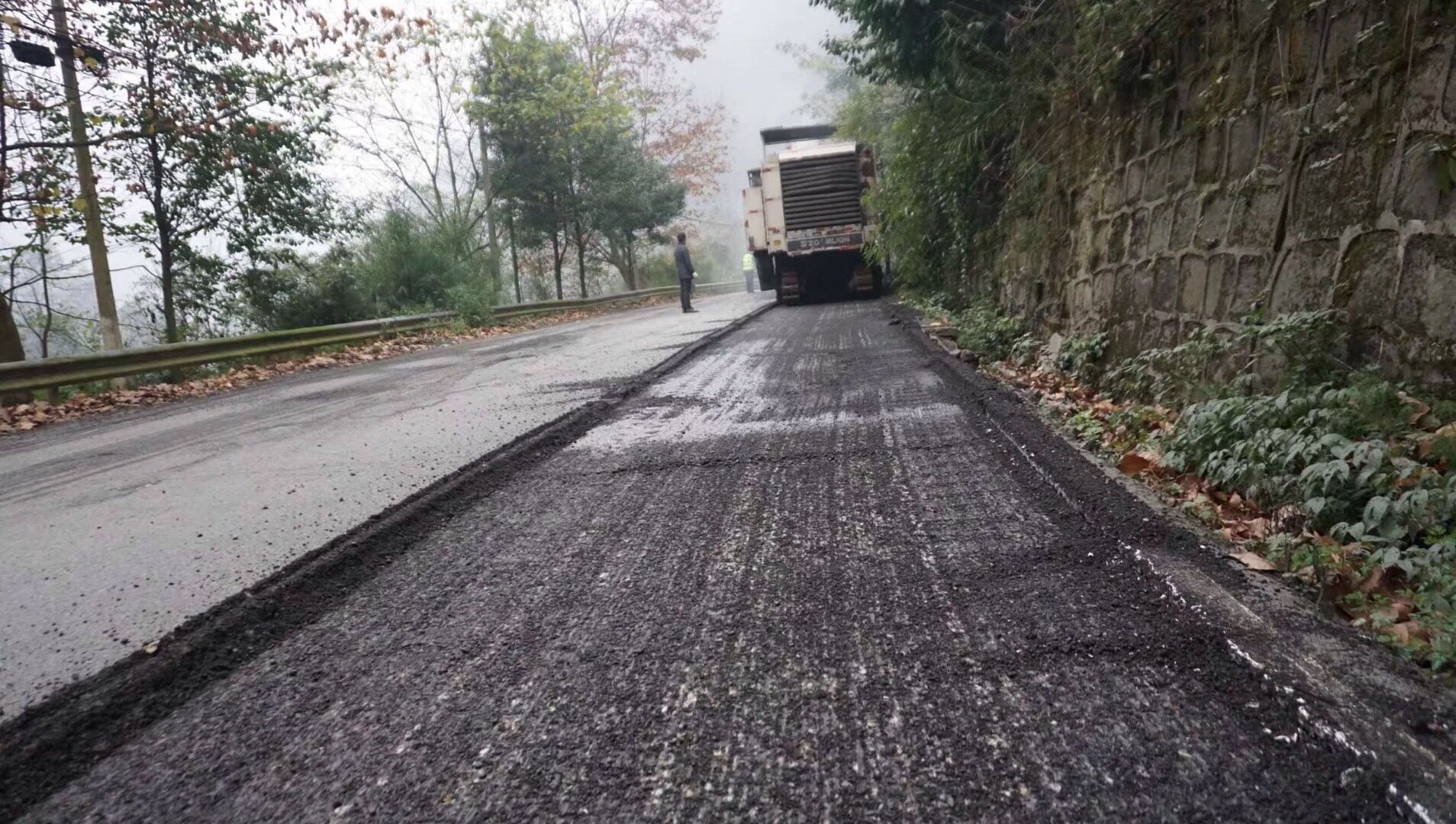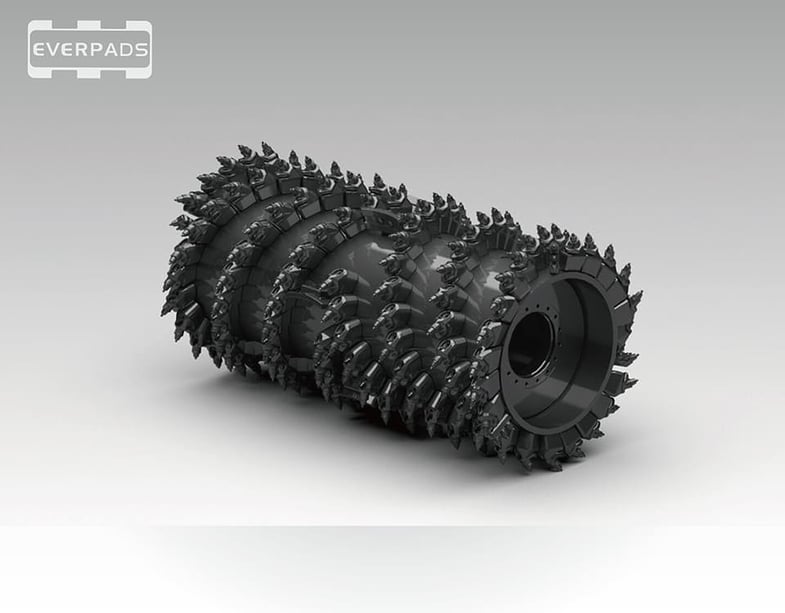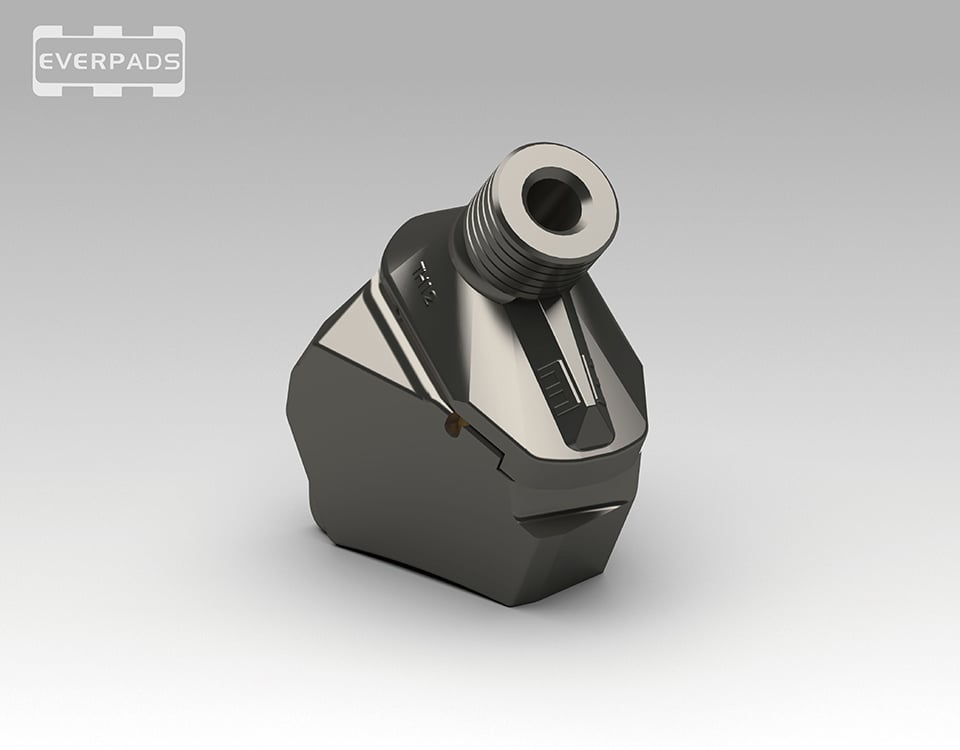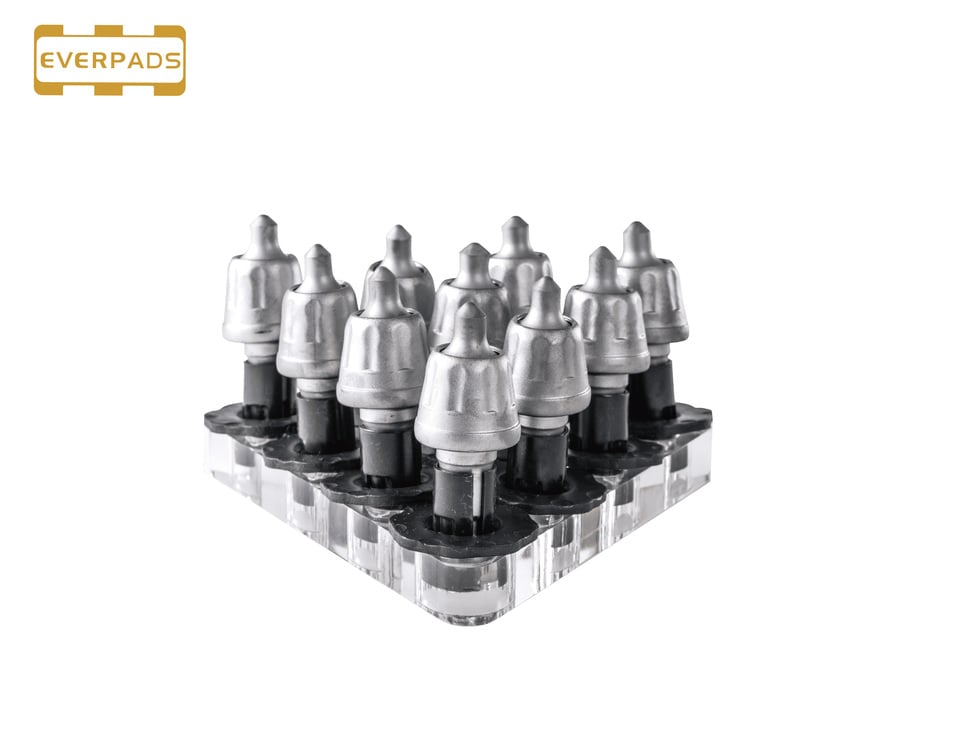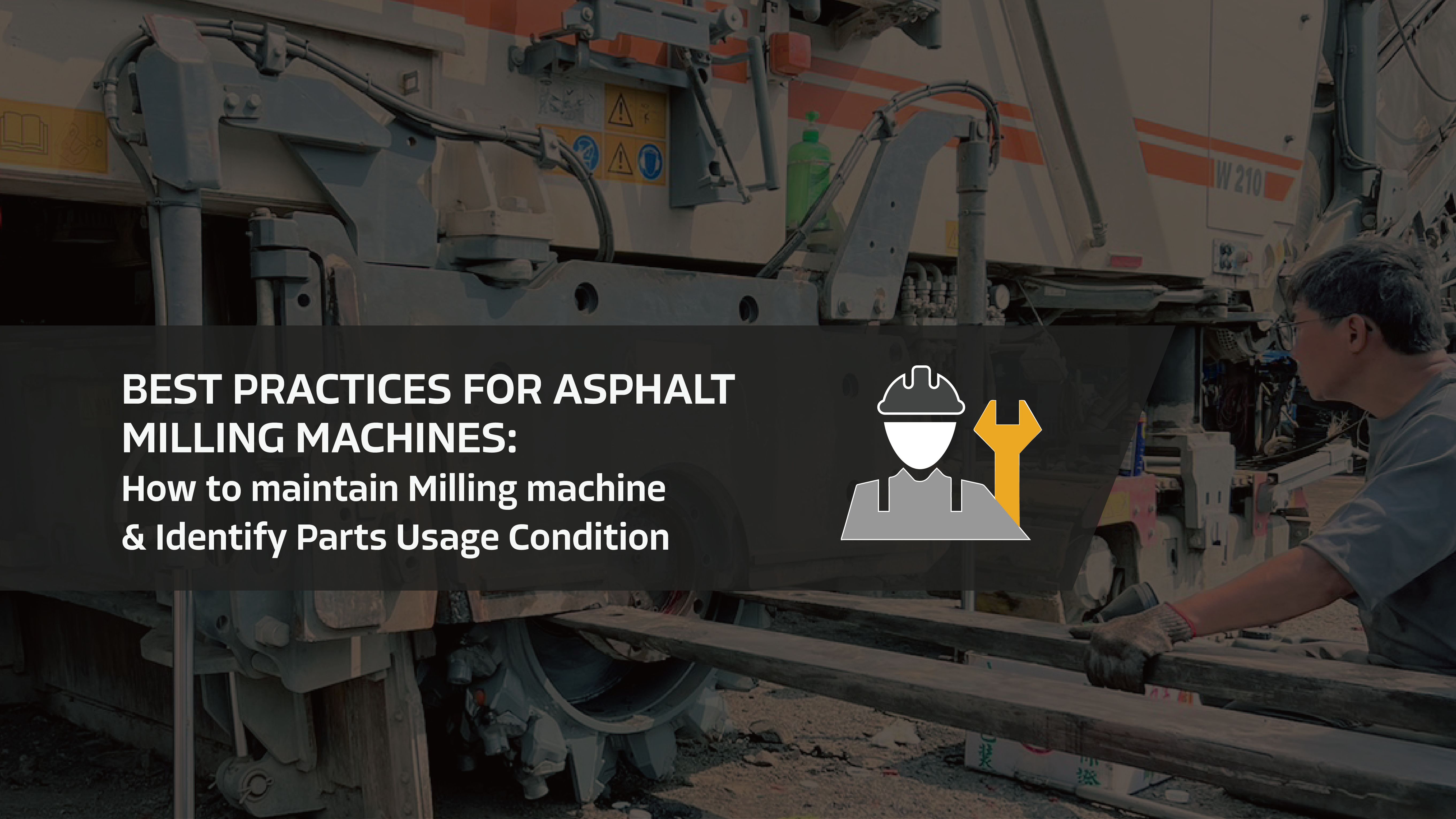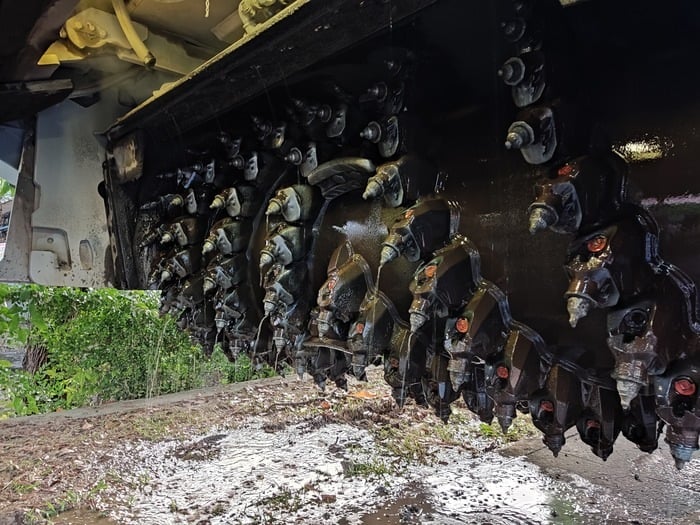What is Asphalt Milling?
Asphalt milling is the process of removing the top surface layer of an existing asphalt pavement.
Table of Contents:
1. The Recycled Asphalt Pavement
2. The Asphalt Milling Process-How to Prepare It
3. What Projects Need Asphalt ?
4. What Problems Does asphalt milling Fix?
5. The Benefits of Asphalt Milling
6. What Equipment is Needed For Milling Asphalt?
7. Different types of Milling Surfaces
8. How to Choose the Right Milling Machine for Asphalt Milling
9. 9 Tips for Asphalt Millings
The Recycled Asphalt Pavement
The removed material, known as asphalt millings, can be recycled and used as the base material for new asphalt pavement.
It is called millings because it is typically done using a milling machine, which has a large rotating drum fitted with carbide cutters that grind away the old asphalt paving project. The recycled asphalt is then collected and transported to a facility for screening and cleaning.
The milling is used to remove top layer deterioration, correct concrete deformations, or level out other materials to improve the surface condition, or to make way for new asphalt overlay or restoration. The process is for the removal of the damaged surface while leaving the sub-base intact, which can then be reused.
In this article, we will take a closer look at what asphalt milling is, the essential equipment you need, as well as the various uses and advantages of using them for pavement projects. We will also provide pro tips for you to succeed in your next project.
How is Reclaimed asphalt Pavement Milled?
Asphalt is most commonly used for road repairs, it uses human-based Cold milling equipment to grind the existing pavement.
These rows of cutting teeth are installed diagonally at the bottom of a large rotation drum which digs up the surface at a depth of about 2 inches. The substrate passes in an automated grinding unit which crushes the metal.
Next, the machine sieves or screens the crushed asphalt in a specific amount, typically about 1 inch, and then transfers them to an outlet conveyor which attaches to this machine.
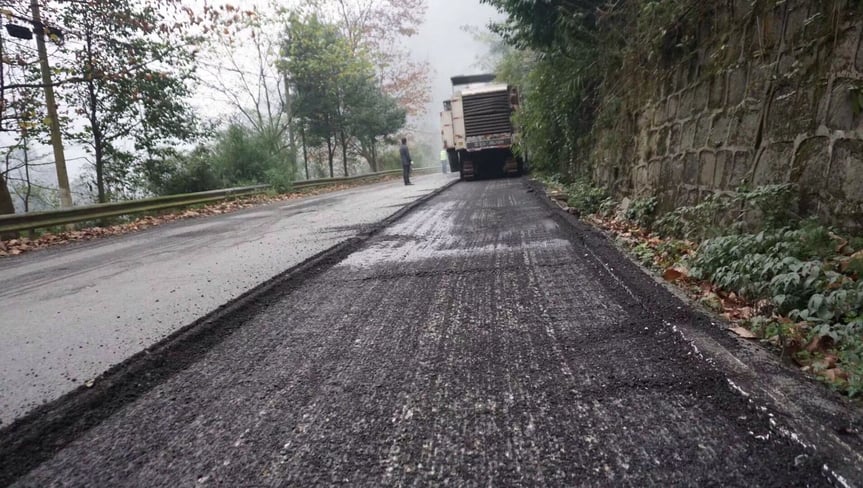
The Asphalt Milling Process-How to Prepare It
The asphalt process begins with the removal of asphalt material, typically through a machine used for road milling, which uses a large rotating drum fitted with carbide cutters that grind away the paved asphalt. As the drum rotates, it grinds up the old pavement and any underlying stone gravel into small particles. The particles are then collected and transported to a facility where they are screened to remove any debris, such as rocks, or impurities.
Once the asphalt millings have been cleaned, they are to be used for various projects. The process typically uses large road milling equipment, although small machines for milling can be used to remove small areas of asphalt. The depth of milling can also be adjusted depending on the desired thickness of asphalt millings.
Here are the steps for asphalt milling process
1. Determine the asphalt condition.
2. Measure the exact volume of the asphalt milling area.
3. Detect hard objects like the steal object manhole. Draw starting and ending point.
4. Choose the right machine for your project to remove the top layer of asphalt.
5. Collect recycled materials (the former asphalt)into a dump truck.
6. Clean up the milled surface.
7. Lay new hot mix asphalt.
What Projects Need Asphalt ?
Asphalt milling can be used for a variety of projects, including:
1. Road construction and repair: Asphalt millings can be used as a base layer or top layer for new roads or laid on the existing pavement to provide a smooth surface.
2. Pavement for driveways and parking lots: Asphalt millings can be compacted and shaped to create a smooth and stable surface for driveways and parking lots that is durable and long-lasting.
3. Erosion control and drainage improvement: Asphalt millings can be used to control erosion and improve drainage on unpaved roads and other surfaces.
4. Stabilization for unpaved roads: Asphalt millings can be used to stabilize unpaved roads and other surfaces, making them suitable for traffic.
5. Lane additions or expansion: Asphalt milling can also be used in lane additions or expansion projects by removing a layer of the existing asphalt to make room for a new lane or turn lane.
What Problems Does asphalt milling Fix?
Cracking
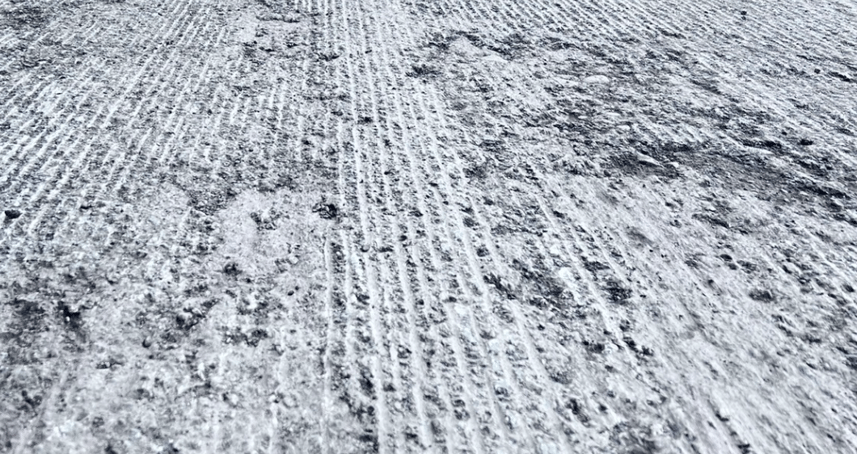
Bleeding
Road surface bleeding is a type of asphalt pavement distresses, it occurs when the asphalt binder used in the pavement mix starts to bleed through the surface of the pavement. This can happen due to various reasons such as high traffic volume, high temperatures, and aging of the pavement. As the asphalt binder comes to the surface, it can make the road surface slippery and create a glossy appearance. It can also lead to other types of pavement distress, such as rutting and potholes, if not addressed in a timely manner.
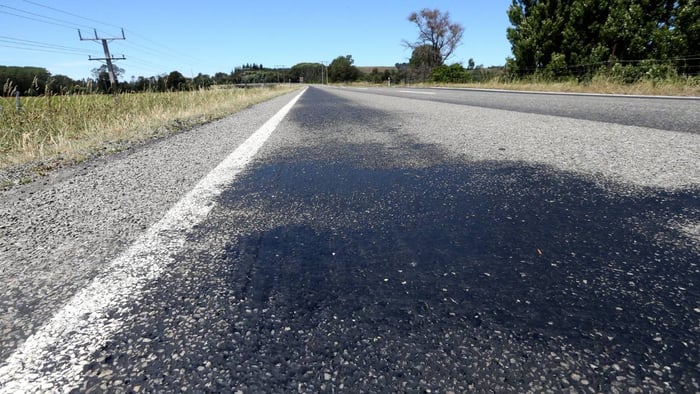
Raveling
Road surface raveling is a type of pavement distress that occurs when the surface of the road begins to break down and small aggregate particles are lost. This can happen due to a variety of factors, such as the use of low-quality materials, inadequate compaction, or exposure to heavy traffic and weather. Raveling can cause the surface of the road to become rough and uneven, which can make it difficult to drive on and can also increase the risk of accidents. The problem typically begins at the surface and can progress deeper into the pavement if left unaddressed, leading to more extensive and costly repairs.
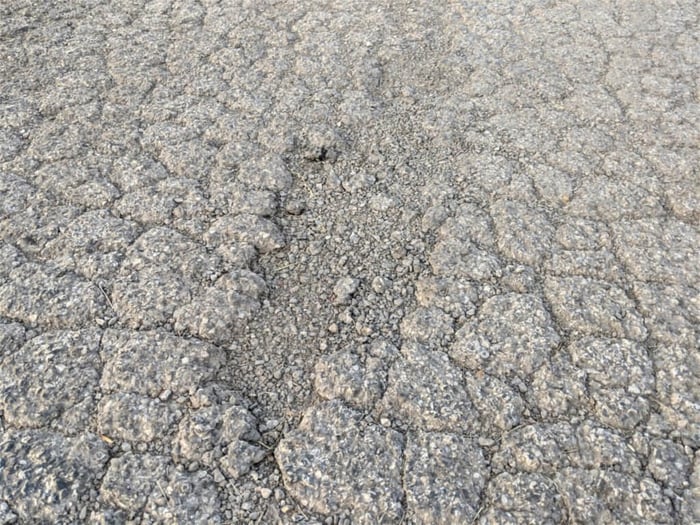
The Benefits of Asphalt Milling
Asphalt milling is a revolutionary technology and it is used to improve pavement restorations.
Cost Effectiveness
Asphalt recycling is a cost-effective solution for many pavement repair and restoration projects. Using recycled asphalt eliminates the need to purchase new materials, making it an environmentally friendly and economical choice.
Additionally, asphalt milling can be used in areas where traditional paving methods are not possible due to space constraints or soil conditions. The process also reduces labor costs while providing a smoother surface than other methods such as traditional gravel or concrete resurfacing.
Asphalt milling also requires less maintenance over time than when traditional paving materials and other pavement solutions are used, leading to lower long-term costs for property owners and municipalities.
Sustainable and environmentally friendly
The process also helps to reduce air pollution compared to paving methods as it does not require burning or heating materials.
Asphalt pavement milling also requires less maintenance over time than other pavement solutions, leading to lower long-term costs for property owners and municipalities while helping to protect our environment from harmful emissions.
It is Safe
Asphalt milling reduces the risk of slips and falls as it creates a smoother surface than traditional paving methods.
The process also eliminates sharp edges that can cause tripping hazards, making it safer for pedestrians and vehicles alike.
Easy to Install and Maintain
Asphalt milling is often used to resurface an existing pavement, making it an ideal option for repairs or overlays. This eliminates the need to remove the entire existing pavement and reduces the amount of labor and equipment required.
What Equipment is Needed For Milling Asphalt?
The equipment needed for asphalt milling depends on the scope and size of the project. Some of the most common equipment used for asphalt milling include:
1. Milling machine: This is the machine used to remove the existing asphalt layer. It typically has a large rotating drum fitted with carbide cutters that grind away the former asphalt paved surfaces.
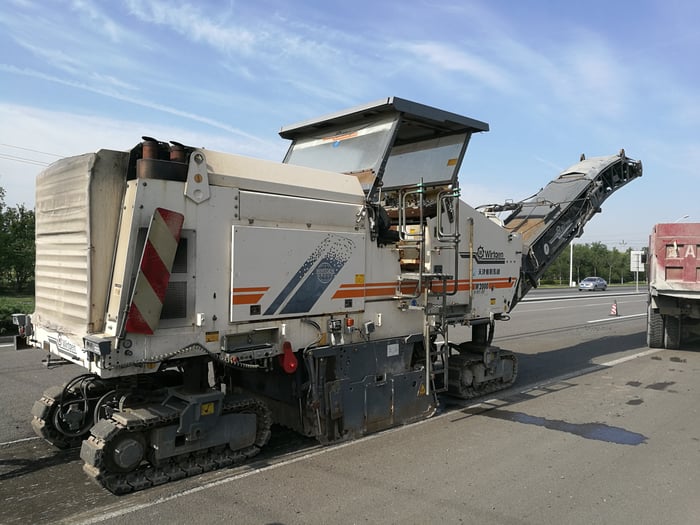
2. Excavator or Skid steer: It may be used to remove the asphalt millings if a high volume of millings must be transported and loaded into trucks.
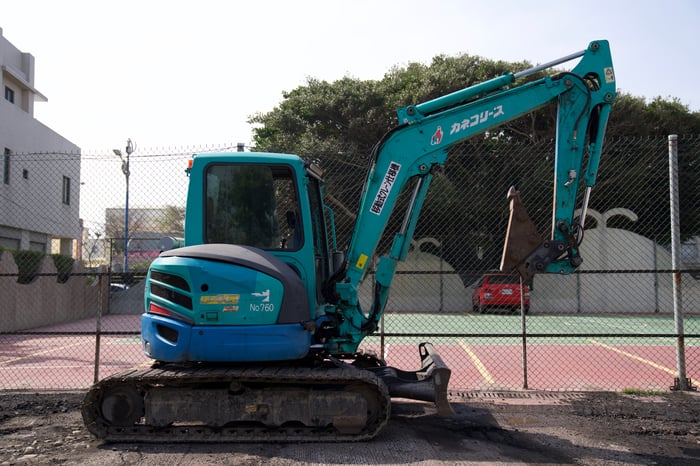
3. Dump truck: Dump trucks are used to transport milled asphalt or other paving materials from the asphalt planer to the storage area or the paving site.
4. Bobcat: Once the machine for milling has finished its work, the Bobcat is usually used to load the millings into dump trucks, which can then transport the material to a facility for screening and cleaning, or directly to the site for further use.
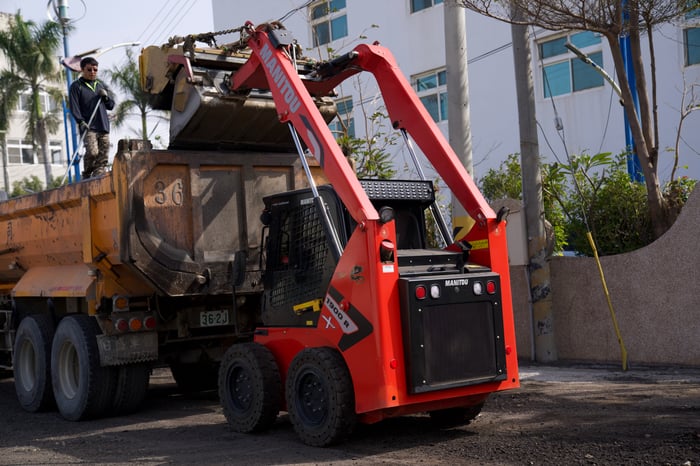
5. Screening and Conveyor equipment: These are used to clean, classify and separate the milled asphalt in the facility before being transported to the site.
It's important to note that rental equipment options or even contracting an equipment rental company can be a cost-effective solution to access the specific equipment needed.
Depending on the specific project, there may be other specialized equipment that is needed. It's important to consult with a professional or do more research before deciding on the equipment needed for a specific project.
Different types of Milling Surfaces
Asphalt cold planer can implement a different type of milling drum based on your road surface requirements. There are several types of milling surfaces, each with its unique characteristics and uses.
Some of the most common types include:
1. Standard Milled Surface: This type of milling surface is created by a machine that has a large rotating drum fitted with carbide cutters that grind away the old asphalt surface. This is the most common type of milling surface, resulting in a rough, textured surface that provides good traction for vehicles.
2. Micro-Milled Surface: This type of milling surface is created by a machine that has a drum fitted with more volume of carbide cutters. It results in a smoother surface than a standard milled surface, which is often used on high-speed roads and highways.
3. Fine Milled Surface: This type of milling surface is created by a machine that has a drum fitted with even more carbide cutters. It results in a smooth surface similar to a traditional hot-mix asphalt surface. It is often used on high-traffic roads, highways, and parking lots where a smooth surface is desired.
4. Full-depth Milled Surface: Full depth removal is created by a machine that removes the entire thickness of the asphalt surface and underlying layers. It is often used for road reconstruction or rehabilitation projects where full depth removal of the existing surface is necessary.
5. Partial-depth Milled Surface: This type of milling surface is created by a machine that removes only a portion of the existing surface. It is often used for pavement overlay projects where a new surface is to be added on top of the existing surface.
Learn whether your machine requires replacement or just requires replacing the drum.
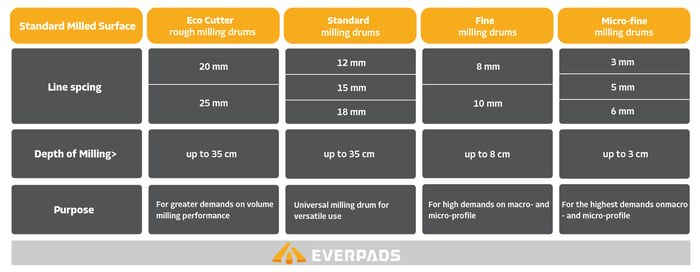
The type of milling surface to be used will depend on the specific project, the traffic volume, and the intended use of the surface.
Endeavor to consult a professional to determine the appropriate type of milling surface for a particular project.
How to Choose the Right Milling Machine for Asphalt Milling
Choosing the right machine for a project is crucial for its success. The milling machine is the backbone of the entire milling process, so it's important to select one that is suitable for the specific task at hand.
When selecting milling equipment, factors such as the size of the project, the condition of the existing pavement, the desired finished surface, and the available budget should be taken into consideration.
For small-scale projects, a smaller machine may be sufficient, while larger projects may require a larger machine with more advanced features.
Additionally, it's important to consider the machine's width, cutting depth, horsepower, and the availability of operator training or service.
It's also important to research the manufacturer's reputation for quality and reliability before making a final decision.
Ultimately, choosing the right machine for milling will help ensure that the project is completed efficiently and effectively, resulting in a smooth and durable surface.
9 Tips for Asphalt Millings
Asphalt milling can be a cost-effective and sustainable solution for pavement needs, but it's important to take proper steps to ensure the millings are installed and maintained correctly.
Here are some tips for successful asphalt milling:
1. Proper site preparation: Proper site preparation is essential for a successful milling project. This includes grading the site to ensure proper drainage and stabilizing the subgrade if necessary.
2. Use the correct equipment: Make sure that the equipment used for milling is in good condition and that the operator is properly trained.
3. Use the right depth: The depth of milling will depend on the specific project, but it's important to ensure that the right depth is used to remove the right amount of asphalt.
4. Proper compaction: After the fresh asphalt millings have been placed, proper compaction is essential to ensure a stable and durable surface.
5. Routine maintenance: Regular sweeping and cleaning of the surface are essential to maintain the longevity of the fresh asphalt millings.
6. Seal Coating: Seal Coating the surface will protect millings from elements, thereby, prolonging their life.
7. Regular inspection: Regular inspection of the millings is necessary to identify and repair any damage as soon as possible.
8. Snow and Ice Removal: Proper snow and ice removal techniques should be used to avoid damage to the millings and to keep the surface safe for vehicles and pedestrians.
9. Consult with a professional: With 30 years experience of heavy equipment parts manufacturing at EVERPADS, we found out that; professional consultation is important before beginning any asphalt milling project. A professional would be able to advise you on how much recycled asphalt milling would be necessary and how much it would cost in materials and labor.
Following the tips above will help you meet the Federal Highway Administration recommendations. It will also help ensure that your asphalt milling project is a success while saving you time and money in the long run.
Last Words
With the above tips, you can better understand milling asphalt benefits and the milling information you need to keep in mind including how they will affect your next milling project.
.png?width=698&height=417&name=%E5%AE%98%E7%B6%B2logo%20(1).png)
